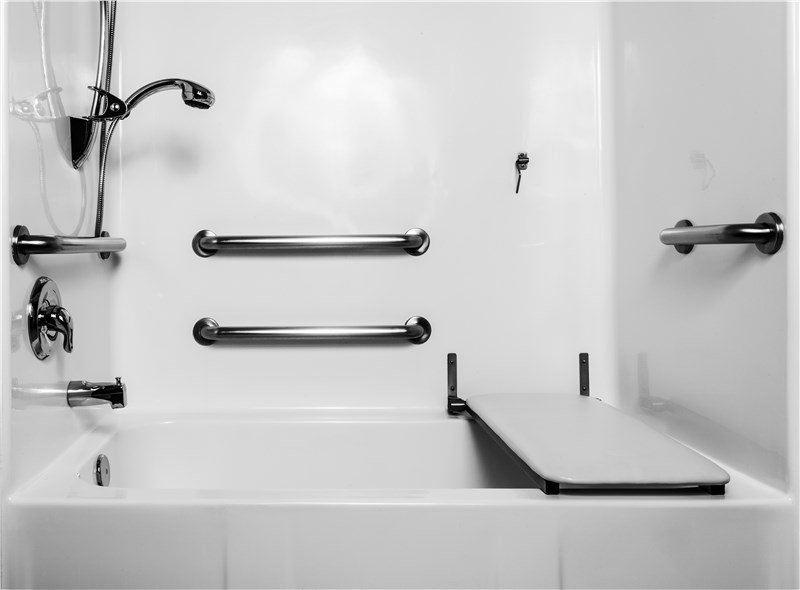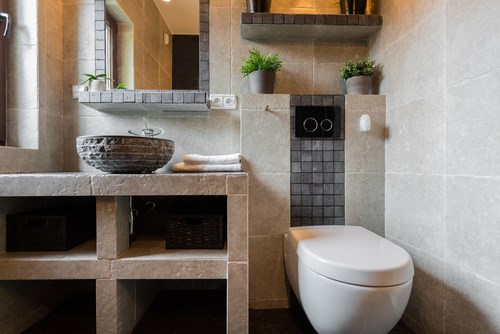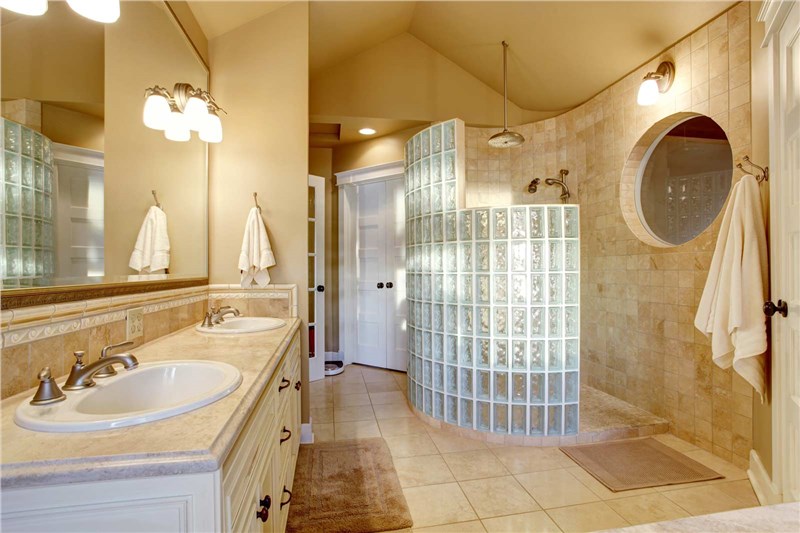Converting a traditional bathtub into a shower is a popular remodeling choice for homeowners seeking a fresh, functional bathroom that suits modern lifestyles. A tub-to-shower conversion can maximize space, improve accessibility, and update the look and feel of the bathroom. Here’s a comprehensive guide to ensure a successful conversion.
1. Reasons to Convert a Tub into a Shower
- Enhanced Accessibility: Showers, especially walk-in or doorless designs, are easier to access than tubs, making them a safer option for elderly individuals or those with mobility challenges.
- Modern Design: A shower can instantly modernize a bathroom. With customizable features like frameless glass, rainfall showerheads, and sleek tiles, a new shower provides a more contemporary, stylish look.
- Space Optimization: Replacing a bulky bathtub with a shower opens up the bathroom, making it feel more spacious, especially in smaller homes or apartments.
- Water and Energy Efficiency: Showers often use less water than baths, particularly if fitted with low-flow showerheads, helping to reduce utility bills and environmental impact.
- Increased Resale Value: A modern, updated shower can make your home more appealing to potential buyers, especially in markets where shower-based bathrooms are in demand.
2. Planning Your Tub-to-Shower Conversion
- Assess Your Needs: Think about who will be using the shower and what features are important. For instance, consider adding benches, grab bars, or non-slip tiles for elderly or disabled family members.
- Space Considerations: Measure the bathroom carefully to ensure the new shower fits comfortably. The average tub size is about 5 feet long, providing ample room for a spacious shower conversion.
- Design Style: Choose a design that complements your bathroom’s style. Whether it’s a minimalist, spa-like shower with sleek tiles and a glass door, or a luxurious walk-in shower with custom tile work, plan for a look that reflects your taste.
- Drainage and Waterproofing: Proper drainage is crucial in a shower conversion. The floor needs to be sloped toward the drain, and waterproofing the shower area will help prevent leaks and water damage.
3. Key Features to Include in Your New Shower
- Showerhead Options: From rain showerheads to handheld models, choose a style that fits your preferences. Some people opt for multiple showerheads or body sprays for a luxurious experience.
- Glass Enclosures or Open Design: A glass shower enclosure can create a sleek, modern look while preventing water from splashing into the rest of the bathroom. Alternatively, a doorless or walk-in shower offers a more open, spacious feel.
- Storage Solutions: Built-in niches or shelves can store toiletries without cluttering the shower floor. Make sure they’re placed at convenient heights.
- Tile Selection: Consider large-format tiles for a seamless look and fewer grout lines. Porcelain or ceramic tiles are durable and water-resistant, while mosaic tiles on the shower floor can provide added traction.
- Lighting: Good lighting enhances the shower experience. Recessed lighting, waterproof fixtures, or LED accent lighting can brighten up the space.
4. Steps in a Tub-to-Shower Conversion
- Demolition: The existing tub, tiles, and plumbing fixtures will be removed.
- Plumbing Adjustments: Depending on the layout, the plumbing may need to be adjusted to accommodate a new drain location and shower fixtures.
- Waterproofing: Install a waterproof membrane to prevent water from seeping into the walls and floors.
- Shower Base Installation: Choose between a pre-fabricated shower base or a custom-built tile base, depending on your preference and budget.
- Tiling: Install wall tiles, flooring, and any accent tiles. Make sure the slope of the shower floor directs water towards the drain.
- Glass Enclosure Installation: If you opt for a glass door or panel, this will be installed once the tiling is complete.
- Final Touches: Install showerheads, faucets, lighting, and any other accessories.
5. Cost Considerations
The cost of converting a bathtub into a shower can vary widely depending on several factors:
- Materials: High-end materials like custom tiles, frameless glass doors, and premium fixtures will increase costs. However, more budget-friendly options like acrylic panels or pre-fabricated shower bases can help keep expenses down.
- Labor: Professional installation ensures quality and safety, especially when plumbing, tiling, and waterproofing are involved. Labor costs typically make up a significant portion of the overall budget.
- Customization: The more custom features you include (such as custom-built benches, special tiling patterns, or luxury fixtures), the higher the price.
- Average Costs: A basic tub-to-shower conversion might start around $1,500 to $3,000, while more elaborate remodels with custom designs can cost $5,000 to $10,000 or more.
6. Things to Keep in Mind
- Permits and Codes: Some jurisdictions may require permits for a tub-to-shower conversion, especially if you’re relocating plumbing. Check local building codes and work with a licensed contractor.
- Bathtub Retention: If you’re converting the only bathtub in the home, consider how this might affect resale value. Families with young children often prefer at least one bathtub in the house.
7. Post-Conversion Care and Maintenance
- Cleaning: Regular cleaning will keep your new shower looking fresh and prevent mildew or mold buildup. Use non-abrasive cleaners on tiles and glass to avoid scratches.
- Grout Maintenance: Sealing grout periodically can help prevent staining and prolong the lifespan of the tiles.
Conclusion:
A tub-to-shower conversion is an excellent way to transform your bathroom into a more functional and modern space. By carefully planning the design, choosing the right materials, and considering long-term maintenance, you can create a shower that fits your needs and enhances the overall look and value of your home.
Subscribe to Home Concepts Custom Remodeling's Blog









Comments